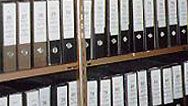Press Advisories
4. 1. 2010 8:11
The Czech Republic is now a member of the AWACS airborne early warning system
On 1 January the Czech Republic became part of the alliance AWACS airborne early warning system. This decision was made by the government on 14 December 2009.
By becoming part of this programme the defence capability of the Czech Republic will be improved and generally strengthened. At the same time its standing in NATO will be consolidated.
The states in the airborne early warning system programme are protected by AWACS aircraft, which are characterised by the “disc” above their fuselage that measures over nine metres in diameter. The Czech Republic is to pay an annual contribution of EUR 290,000 (around CZK 7.5 million) to the NAPMO programme. The funds are to be provided from the budget of the Ministry of Defence. Entry into this system was preceded by relatively lengthy negotiations.
NAPMO currently has 17 members, of which 16 (Belgium, Canada, Denmark, Germany, Greece, Italy, Luxembourg, Hungary, the Netherlands, Norway, Poland, Spain, Portugal, Romania, Turkey and the United States) jointly operate 17 Boeing E-3A aircraft, carrying the NATO code “Sentry”. The seventeenth country is Great Britain, which operates seven E-3D aircraft at its own cost.
The NAPMO organisation was established in 1978 under NATO. It is subject to the North Atlantic Council, but is financially, organisationally and administratively independent within NATO. The early warning aircraft mainly operate out of the Geilenkirchen base in Germany and also use forward airfields in Italy, Greece, Turkey and Norway.
The E-3A AWACS group of aircraft is the only international NATO aviation unit. The aircraft feature an antenna measuring over nine metres placed over their fuselage and their job is to detect any potential airborne attack far in advance of the borders of NATO air space. They have the capability to navigate and control friendly aircraft in an air battle. They can also coordinate airborne attacks on ground targets or help to navigate transport aircraft.






